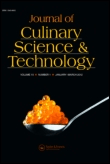
Journal of Culinary Science & Technology
Scope & Guideline
Bridging culinary creativity with scientific rigor.
Introduction
Aims and Scopes
- Food Product Development:
The journal emphasizes the development and characterization of new food products, including the incorporation of novel ingredients, optimization of recipes, and analysis of sensory and nutritional properties. - Food Safety and Quality Assurance:
Research on food safety protocols, quality assurance measures, and consumer perceptions regarding food safety is a core focus, reflecting the importance of maintaining high standards in culinary practices. - Culinary Techniques and Innovations:
The journal explores innovative cooking techniques and their effects on food properties, including texture, flavor, and nutritional content, contributing to the evolution of culinary practices. - Sustainable Culinary Practices:
An increasing emphasis is placed on sustainability in food production, waste reduction, and the utilization of underutilized ingredients, reflecting a growing concern for environmental impacts in culinary science. - Cultural and Nutritional Aspects of Food:
The journal also delves into the cultural significance of food, dietary habits, and the nutritional implications of various culinary practices, highlighting the intersection of gastronomy and health.
Trending and Emerging
- Plant-Based and Alternative Ingredients:
There is a notable trend towards research on plant-based ingredients and alternative proteins, driven by consumer demand for healthier and sustainable food options. - Functional Foods and Health Benefits:
Increasing publications focus on the development of functional foods that offer health benefits, such as enhanced nutrition and bioactive properties, aligning with global health trends. - Food Technology and Innovation:
Emerging technologies, such as 3D printing in food production and novel preservation techniques, are gaining traction, showcasing the journal's commitment to exploring cutting-edge culinary science. - Consumer Behavior and Culinary Experience:
Research exploring consumer preferences, perceptions, and experiences related to food and culinary practices is on the rise, reflecting an increasing interest in the psychological and social aspects of dining. - Sustainability in Food Systems:
Sustainability has become a key theme, with growing research on sustainable practices in food production and consumption, addressing the environmental impacts of culinary arts.
Declining or Waning
- Traditional Cooking Methods:
Research focusing on traditional cooking methods and their nutritional implications has decreased, possibly due to a growing interest in modern, innovative techniques and the integration of technology in culinary practices. - Regional Culinary Practices:
There appears to be a decline in studies centered around specific regional culinary practices, as the journal shifts towards a more global perspective on food trends and innovations. - Food Pairing and Flavor Combinations:
While flavor pairing remains important, dedicated research on specific food pairing theories has diminished, overshadowed by broader studies on overall culinary innovation and consumer acceptability.
Similar Journals
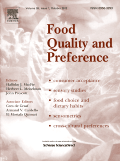
Food Quality and Preference
Enhancing Insights into Consumer Behavior and Food QualityFood Quality and Preference is a leading journal in the fields of food science and nutrition, published by ELSEVIER SCI LTD. With a notable impact factor and ranking in the Q1 quartile for both food science and nutrition and dietetics in 2023, this journal consistently publishes high-quality research that explores the multifaceted aspects of food preferences, sensory evaluation, and consumer behavior. The journal provides a critical platform for researchers, professionals, and students engaged in the study of food quality, aiming to enhance our understanding of how sensory properties, nutritional value, and consumer choices intersect. Its commitment to disseminating cutting-edge findings makes it an essential resource for advancing the field and informing practice in both academic and industry settings. Access to the journal is via subscription, allowing for robust engagement with pioneering research that shapes current and future practices in food-related studies.
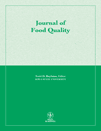
JOURNAL OF FOOD QUALITY
Nurturing Quality and Safety in Food ResearchThe Journal of Food Quality, an esteemed publication under Wiley-Hindawi, stands as a vital resource in the dynamic field of Food Science, established since 1977 and operating under an Open Access model since 2017. With its seat in the United Kingdom, this journal focuses on delivering high-quality research and insights pertaining to food safety, risk management, and quality assurance, reflected in its impressive Q2 ranking in both Food Science and Safety, Risk, Reliability and Quality categories in 2023. Researchers and professionals will find the journal’s contributions indispensable, particularly given its Scopus rankings that place it in the top echelons of its fields, highlighting its impact and relevance. By fostering an environment of knowledge sharing, the Journal of Food Quality not only enhances academic dialogue but also supports innovation and best practices in food research and industry applications.
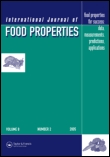
INTERNATIONAL JOURNAL OF FOOD PROPERTIES
Advancing knowledge in food science.INTERNATIONAL JOURNAL OF FOOD PROPERTIES, published by TAYLOR & FRANCIS INC, is a leading platform for disseminating high-quality research in the field of food science. With an ISSN of 1094-2912 and E-ISSN of 1532-2386, this journal has been committed to open access since 2018, ensuring that groundbreaking studies are readily available to global audiences. The journal has steadily gained recognition for its contribution to the discipline, achieving a Q2 ranking in Food Science and placing in the 68th percentile among its peers according to Scopus metrics. Covering a wide array of topics related to the properties and applications of food, it serves as a valuable resource for researchers, professionals, and students alike. With coverage extending from 1998 to 2024, the journal continually seeks to advance knowledge and foster innovation within the food science community, making it a pivotal publication for anyone serious about this vital field.
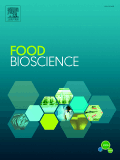
Food Bioscience
Unlocking Knowledge for Tomorrow's Food ChallengesFood Bioscience is a leading peer-reviewed journal published by Elsevier, dedicated to advancing the understanding of the complex interplay between food science and biosciences. With an impressive Impact Factor that places it in the Q1 and Q2 quartiles for Food Science and Biochemistry respectively, the journal consistently ranks among the top publications in its field, reflected in its Scopus rankings (Rank #83/389 in Food Science and Rank #175/438 in Biochemistry). Since its inception in 2013, Food Bioscience has fostered a multidisciplinary approach, bridging gaps between research in agricultural, biological, and food sciences, thus encouraging innovative solutions to the pressing challenges facing the global food supply chain. Although it currently operates under a subscription model, the journal is committed to disseminating high-quality research, making significant contributions to both academic scholarship and industry practices. Researchers, professionals, and students alike are invited to explore the wealth of knowledge contained within its pages as it plays a pivotal role in shaping the future of food bioscience.

Food Culture & Society
Exploring the Intersections of Food, Culture, and SocietyFood Culture & Society is an esteemed journal dedicated to the multifaceted analysis of food, culture, and social practices, published by Routledge Journals, Taylor & Francis Ltd in the United Kingdom. With an ISSN of 1552-8014 and an E-ISSN of 1751-7443, this journal offers a rigorous platform for interdisciplinary research, engaging scholars and practitioners alike. Renowned for its high impact factor and categorized in the Q1 quartile in Cultural Studies, it has firmly established itself as a pivotal publication in the study of food through cultural and social lenses. Additionally, it ranks #140 in Cultural Studies according to Scopus, reflecting its critical role in advancing knowledge in this field. The journal emphasizes the importance of food as a cultural artifact and a site for social inquiry, inviting contributions that explore themes ranging from food systems and sustainability to identity and globalization. As it converges from 2008 to 2024, Food Culture & Society stands at the forefront of scholarly discourse, catering to a diverse audience of researchers, students, and professionals committed to understanding the vital connections between food and society.

Journal of Food and Nutrition Research
Pioneering Insights for a Healthier Food FutureJournal of Food and Nutrition Research, published by the VUP FOOD RESEARCH INST in Bratislava, Slovakia, serves as a vital platform for disseminating cutting-edge research in the fields of food science and nutrition. With an ISSN of 1336-8672 and an E-ISSN of 1338-4260, this journal emphasizes the importance of interdisciplinary approaches to address contemporary challenges related to food quality, dietary practices, and nutritional health. Notably recognized in the 2023 Scopus rankings, the journal is classified in Q3 quartiles for both Food Science and Nutrition & Dietetics, providing a forum for researchers aiming to enhance knowledge and practices within these domains. Those engaged in academia and industry will find the journal invaluable for its comprehensive scope, which covers novel food technologies, nutrition interventions, and the implications of dietary behaviors. Though not open access, the journal is dedicated to enriching the academic conversation and contributing to advancements in public health and nutrition policies.
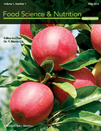
Food Science & Nutrition
Championing open access to vital food and nutrition research.Food Science & Nutrition is an esteemed peer-reviewed journal published by WILEY, dedicated to advancing the fields of food science and nutritional research. With an impressive impact factor and a prestigious Q1 ranking in the Food Science category, this journal stands out as a leading platform for innovative research, offering meaningful insights into the relationship between food composition and health outcomes. Since its transition to Open Access in 2013, Food Science & Nutrition has championed the global dissemination of knowledge, ensuring that vital research is accessible to researchers, professionals, and students alike. With a vast scope that encompasses both agricultural and biological sciences, the journal provides a comprehensive view of emerging trends, methodologies, and applications in food security and nutrition, making it indispensable for those invested in these critical areas.

Applied Food Research
Elevating Food Science Through Pioneering ResearchApplied Food Research, published by Elsevier, is an esteemed journal that plays a critical role in advancing the field of Food Science. With an ISSN of 2772-5022, the journal has established itself as a premier outlet for high-quality research, achieving a commendable Q1 ranking in the 2023 Food Science category and a 63rd percentile in Scopus rankings for Agricultural and Biological Sciences. Covering a diverse range of topics from food safety to innovative processing techniques, Applied Food Research seeks to publish pioneering studies that enhance our understanding of food systems and contribute to broader discussions on sustainability and nutrition. As it converges on its fourth year of publication, researchers, professionals, and students alike are encouraged to engage with its content through various open access options, ensuring widespread dissemination of knowledge in a field that is vital to global health and well-being. Operating out of Amsterdam, Netherlands, this journal is poised to be an indispensable resource for anyone dedicated to making significant contributions in the domain of food science.

FOOD TECHNOLOGY
Exploring the Future of Food TechnologyFOOD TECHNOLOGY, published by the Institute of Food Technologists, is a pivotal journal dedicated to the advancement of knowledge and innovation in the food industry. With its ISSN 0015-6639, this esteemed publication aims to bridge the gap between food science research and practical applications, addressing ongoing challenges and technological advancements in food production, preservation, and safety. Although currently not an open-access journal, FOOD TECHNOLOGY continues to serve as a critical resource for food scientists, engineers, and industry professionals seeking to stay at the forefront of emerging trends and research in the field. Recognized for its impact within the academic community, it holds a Q4 ranking in Chemistry, Food Science, and Industrial and Manufacturing Engineering categories, reflecting its importance in disseminating valuable information. Researchers and practitioners alike will find in its pages a wealth of insights that can influence practices and policies in food technology. The journal's editorial team, committed to upholding rigorous standards, ensures that each issue is a thorough representation of high-quality research and a valuable addition to the body of food science literature.

FOOD REVIEWS INTERNATIONAL
Pioneering Critical Insights in Food ResearchFOOD REVIEWS INTERNATIONAL, published by Taylor & Francis Inc, serves as a pivotal resource within the fields of Food Science and Chemical Engineering. Established in 1985, this esteemed journal offers a comprehensive platform for the dissemination of critical reviews that enhance understanding and innovation in the food industry. With an impressive impact factor reflecting its Q1 quartiles in both Food Science and Chemical Engineering categories, it ranks among the top journals in Scopus, securing the 24th spot in Agricultural and Biological Sciences. Scholars, researchers, and professionals are encouraged to explore its rich content, which spans meticulously reviewed articles that bridge academic research and practical applications, while contributing to advancements in food safety, processing, and sustainability. Although not an Open Access journal, access to its extensive repository is vital for anyone aiming to stay at the forefront of food science advancements.